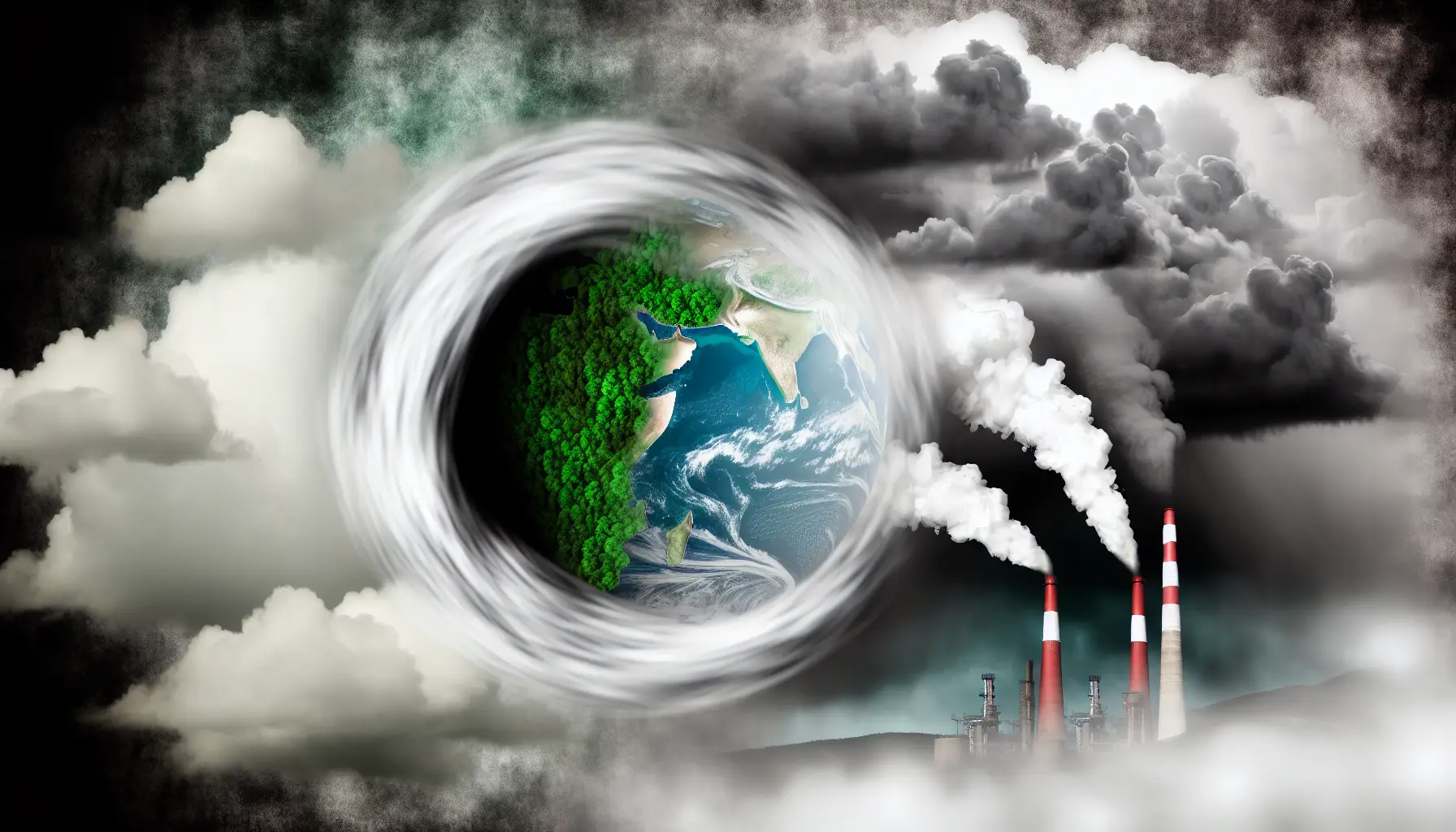
Rising CO2 Levels Threaten: Dangerous Levels of CO2
The increasing concentration of carbon dioxide (CO2) in our atmosphere has become a formidable challenge, with serious implications for both environmental health and human life. As our global population continues to grow and industrial activities press on unabated, recognizing the dangers posed by elevated CO2 levels is crucial for developing strategies to combat climate change and protect our planet.
Understanding CO2 and Its Role in Climate Change
Carbon dioxide is one of the primary greenhouse gases responsible for trapping heat in the Earth’s atmosphere. While CO2 itself is not inherently dangerous—a certain amount is crucial for plant photosynthesis and maintaining Earth’s natural heat balance—the significant rise in its concentration due to human activities poses substantial risks.
Sources of Increased CO2 Levels
Global CO2 levels have surged past safe thresholds primarily because of:
– Fossil Fuel Combustion: The burning of coal, oil, and gas for energy contributes significantly to CO2 emissions.
– Deforestation: Forests act as carbon sinks; thus, their destruction leads to diminished CO2 absorption.
– Industrial Processes: Various manufacturing and chemical processes release CO2 as a byproduct.
– Agricultural Practices: Certain agriculture techniques and livestock production generate substantial CO2 equivalents.
The Danger of Escalating CO2 Levels
The dangers associated with rising CO2 levels extend across numerous domains, impacting everything from global weather patterns to human health.
Environmental Impacts
1. Global Warming and Climate Change: Elevated CO2 levels accelerate global warming by increasing the greenhouse effect, which disrupts climate patterns and produces extreme weather events.
2. Ocean Acidification: Excess CO2 absorbed by oceans leads to acidification, jeopardizing marine life and coral reefs, which are crucial for biodiversity and fishing industries.
3. Ecosystem Disruption: Changes in temperature and precipitation patterns can cause shifts in ecosystems, threatening species that cannot adapt or migrate.
Human Health Concerns
High levels of atmospheric CO2 can have direct and indirect effects on human health:
– Respiratory Problems: Elevated CO2 contributes to air pollutants like ground-level ozone, exacerbating respiratory conditions like asthma.
– Heat-Related Illnesses: Rising temperatures can lead to increased incidences of heatstroke and dehydration, particularly in vulnerable populations.
– Vector-Borne Diseases: Warmer climates expand the habitats of disease-carrying insects, heightening the risk of disease transmission.
– Food Security: Climate change affects agriculture, leading to crop failures and reduced food availability, escalating hunger and malnutrition.
Mitigating CO2 Levels
To stave off the most severe consequences of elevated CO2 levels, a multi-faceted approach engaging both individual and systemic efforts is essential.
Renewable Energy Transition
– Switching from fossil fuels to **renewable energy sources** such as solar, wind, and hydropower is imperative. Not only does this reduce emissions, but it also decreases air pollution and fosters sustainable development.
Enhancing Carbon Sinks
– Afforestation and Reforestation: Planting trees and restoring forests worldwide can significantly increase CO2 absorption.
– Soil Carbon Sequestration: Implementing agricultural practices that promote carbon storage in soils is a viable solution.
Innovative Technologies
– Carbon Capture and Storage (CCS): Developing CCS technologies to capture emitted CO2 before it reaches the atmosphere can mitigate the effects of emissions from power plants and industrial processes.
– Direct Air Capture (DAC): Emerging technologies that extract CO2 directly from the atmosphere and store or convert it into useful products hold promise.
Policy and Global Cooperation
– International agreements like the Paris Agreement are instrumental in committing nations to limit global warming. Cooperation between governments, industries, and communities is necessary to enforce regulations and promote sustainable practices.
Individual Actions Matter
While systemic changes are crucial, individual actions can also make a significant difference. Here are some steps individuals can take:
– Energy Conservation: Turn off lights and appliances when not in use and opt for energy-efficient products.
– Reduce, Reuse, Recycle: Minimize waste by reusing products, recycling materials, and choosing sustainable goods.
– Support Renewable Energy: Choose green energy options where available and advocate for clean energy policies.
– Substituting Transportation: Opt for public transport, carpooling, biking, or walking whenever possible to reduce your carbon footprint.
The Way Forward
The urgency of addressing the dangers posed by elevated CO2 levels cannot be overstated. By recognizing the interconnectedness of human activities and their impact on the environment, we can cultivate a healthier, more sustainable planet. Engaging in informed dialogue, implementing technological innovations, and supporting policies that reduce emissions are crucial steps towards stabilizing CO2 levels and safeguarding our future. Let’s take action today for a livable tomorrow.










